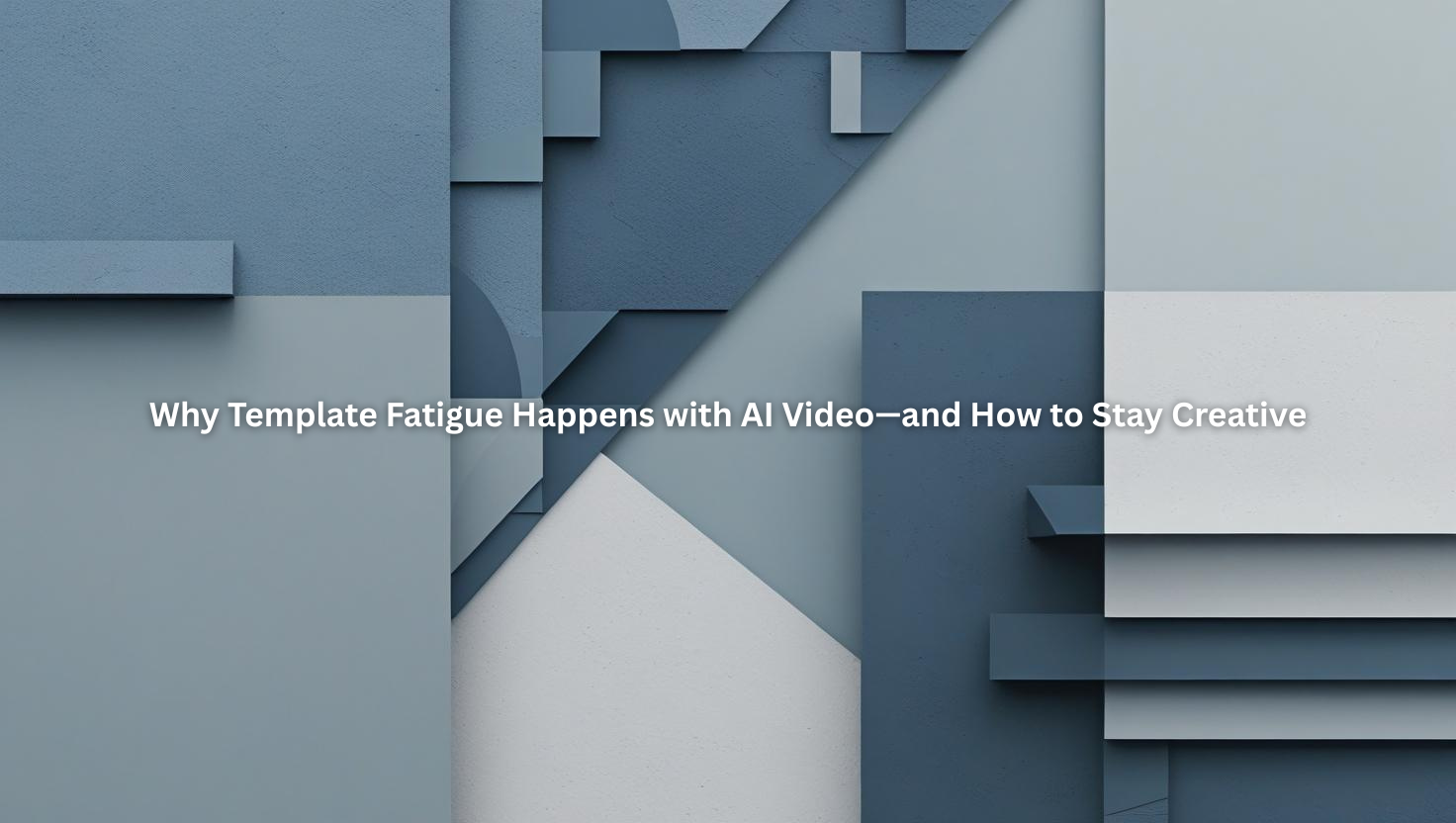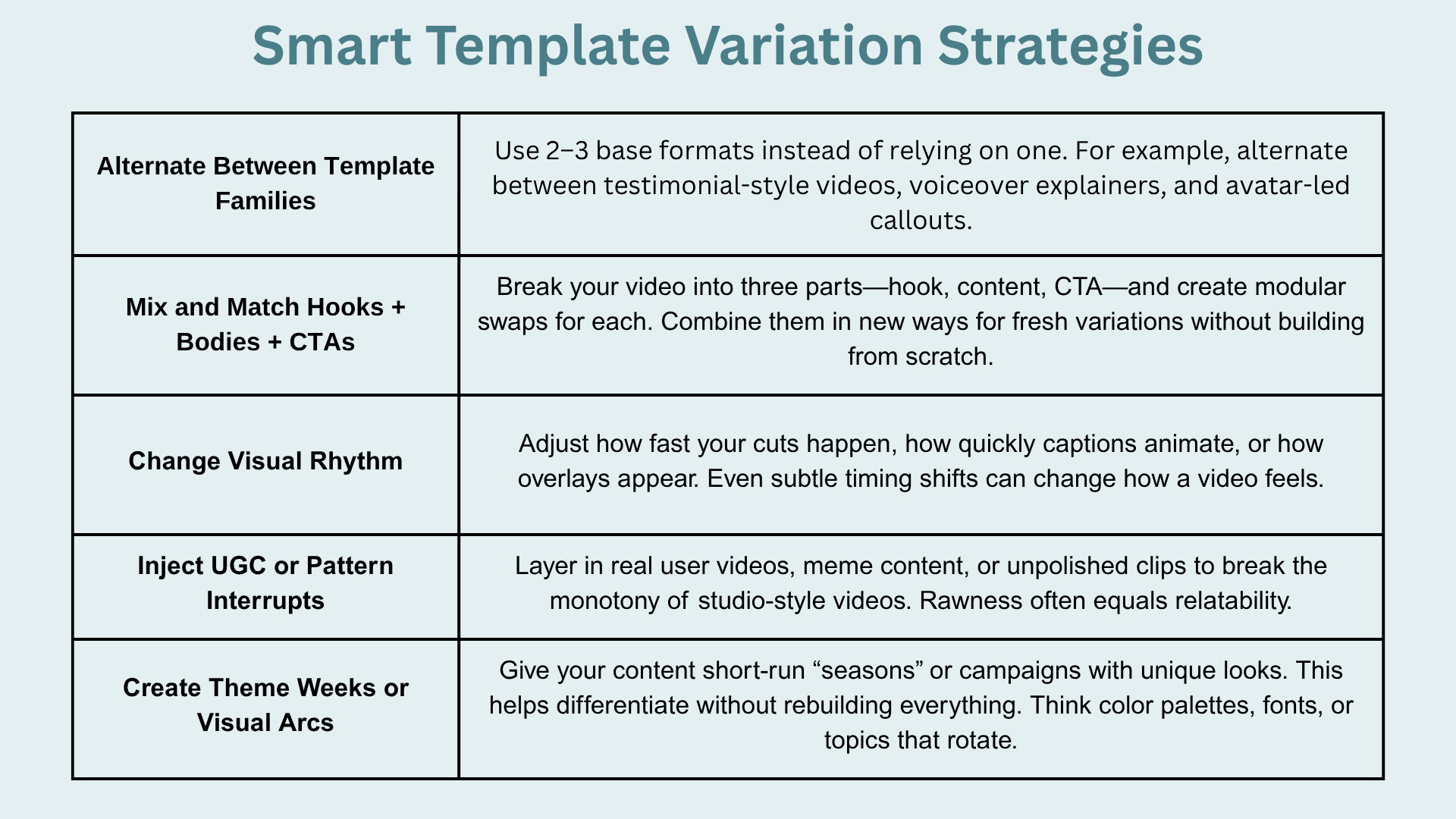
AI video generators have unlocked a new era of speed and scale. With just a prompt or a URL, you can crank out high-quality ad creative in minutes—perfect for social campaigns, product launches, or content testing. But there’s a catch.
The same speed that makes AI video so appealing can also lead to template fatigue—when your audience sees the same format, style, or flow over and over again, and tunes out.
Template fatigue happens when creative starts to feel stale. You’re still publishing consistently. The quality is still decent. But results plateau. Scrolls speed up. Viewers disengage.
It’s not that AI-generated video doesn’t work. It’s that creativity can’t be fully templated.
Marketers love a good template for a reason—it simplifies production, keeps messaging consistent, and makes scaling much easier. But creative performance relies on novelty, not just clarity.
Audiences crave variety. Platforms reward it. And in a world where users see hundreds of short-form videos per day, even small signs of repetition can cause people to scroll past your content.
If you’re using the same voiceover structure, caption animation, background music, and avatar style across 10+ videos, it starts to look—and feel—automated. Viewers don’t hate AI; they hate boring.
Template fatigue isn’t about the tool. It’s about how you use it.
You might be running into template fatigue if:
Sometimes, fatigue isn’t obvious until you A/B test a dramatically different variation. But by then, you’ve already burned through part of your audience’s attention.
The key isn’t abandoning templates altogether—it’s evolving how you use them. Think of your AI video templates like ingredients, not finished meals. You want to remix them, experiment with them, and layer on unexpected creative angles.
Start by rethinking your hooks. Instead of always opening with the product value prop, try a reaction face, a user question, or a visual before/after. Change the entry point, even if the CTA stays the same.
Next, vary your tone. AI makes it easy to generate multiple script options—some casual, some bold, some emotional. Use that flexibility. Don’t just change the visuals—change the voice.
And always keep storytelling front and center. Even with the best templates in the world, a story that feels authentic will outperform one that feels robotic.
Here are some tactical ways to fight off creative burnout while still leveraging AI video templates:
Alternate Between Template Families
Use 2–3 base formats instead of relying on one. For example, alternate between testimonial-style videos, voiceover explainers, and avatar-led callouts.
Mix and Match Hooks + Bodies + CTAs
Break your video into three parts—hook, content, CTA—and create modular swaps for each. Combine them in new ways for fresh variations without building from scratch.
Change Visual Rhythm
Adjust how fast your cuts happen, how quickly captions animate, or how overlays appear. Even subtle timing shifts can change how a video feels.
Inject UGC or Pattern Interrupts
Layer in real user videos, meme content, or unpolished clips to break the monotony of studio-style videos. Rawness often equals relatability.
Create Theme Weeks or Visual Arcs
Give your content short-run “seasons” or campaigns with unique looks. This helps differentiate without rebuilding everything. Think color palettes, fonts, or topics that rotate.
These strategies help you balance creative consistency with enough surprise to keep viewers engaged.

Clicks.Video is built with creative evolution in mind. Instead of locking you into one look, the platform gives you flexibility to experiment, remix, and improve over time.
You can:
The goal isn’t to automate creativity—it’s to give you space to be creative faster.
If you’ve been feeling stuck using the same AI templates over and over, it might be time to switch things up. With Clicks.Video, keeping your content fresh doesn’t have to slow you down.

What is template fatigue in AI video?
Template fatigue happens when your audience becomes disengaged due to repetitive video formats, styles, or messaging. It’s a common challenge when using the same AI video template too often without variation.
Why does template fatigue hurt performance?
When content feels predictable or stale, viewers are more likely to scroll past or tune out. Platforms may also deprioritize repetitive content in their algorithms, reducing reach and engagement.
How can I prevent template fatigue while still using AI?
Use variation strategies—such as changing hooks, rotating between template styles, and mixing tones or pacing. Think modularly, not monolithically.
Can small teams manage template variation without a video editor?
Yes. Tools like Clicks.Video are designed to help small teams and solo creators produce diverse video content without needing advanced editing skills.
How often should I update or rotate my video templates?
There’s no universal rule, but a good starting point is every 3–5 videos. If performance drops or your creative starts to blend together, it’s time to test new styles.